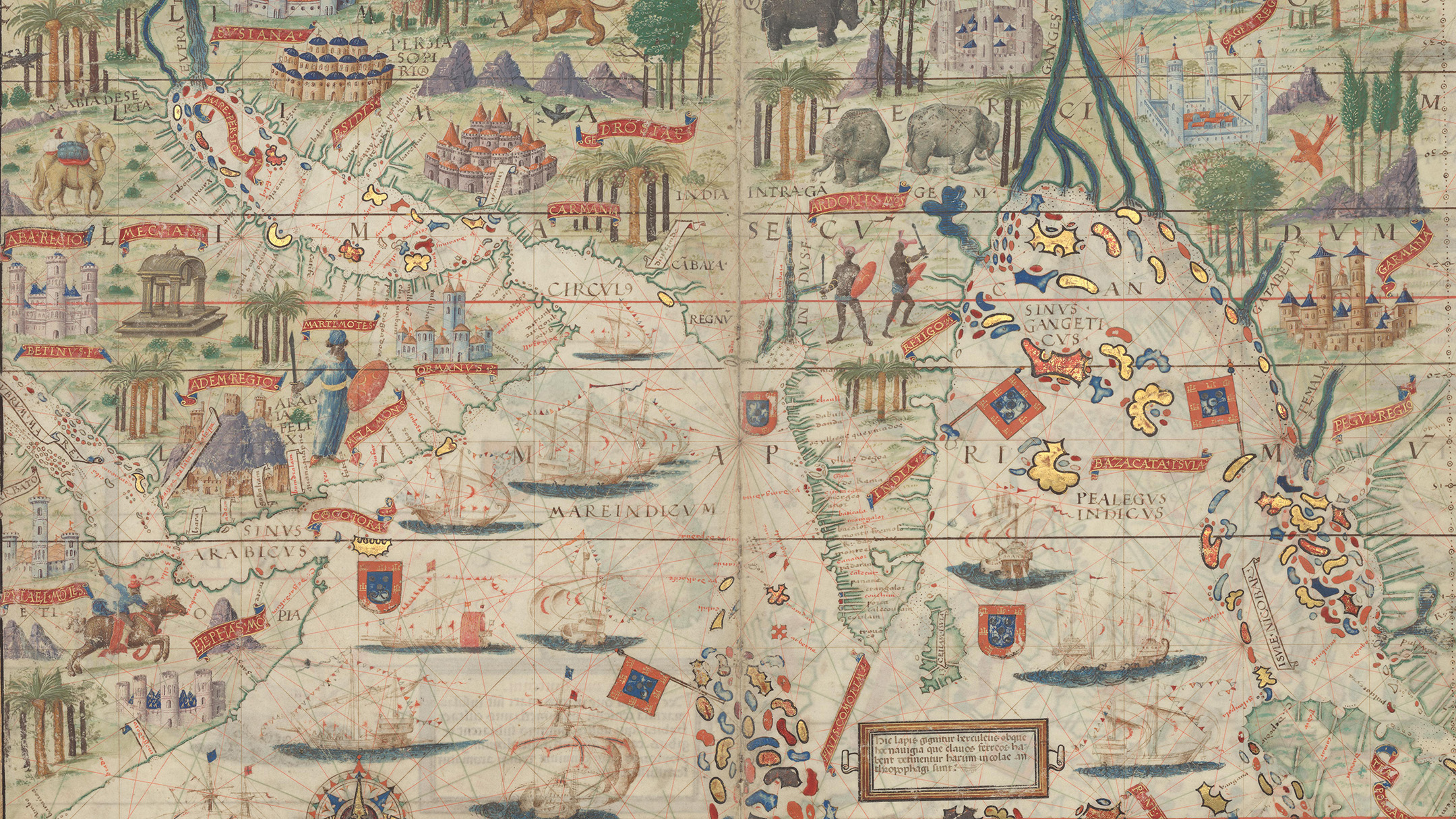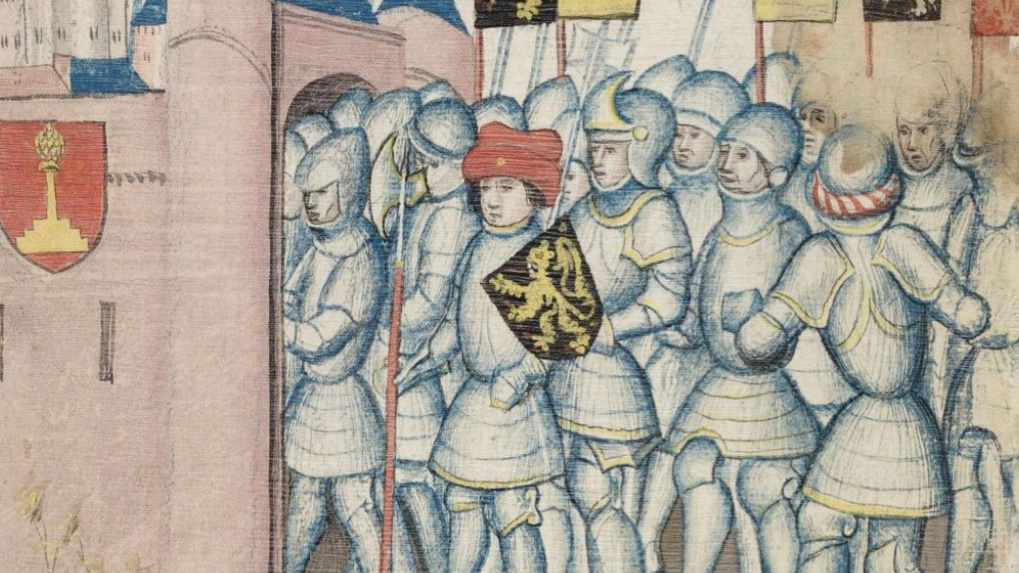Heng, Geraldine. "Collaborative student research." Throughlines. www.throughlines.org/suite-content/collaborative-student-research. [Date accessed].

Collaboration is key when researching an early global world. Geraldine Heng notes in her book Teaching Early Global Literatures and Cultures that teaching global literatures and cultures is a practice in humility. No one human can master the spectrum of languages, knowledges, and disciplinary expertise needed for global research. And while this may sound like a hinderance, it is actually a gift. It means that students become your collaborators.
Heng underscores the importance of student-led research in her classes. Rather than a pedagogical model of knowledge dissemination followed by exams and papers, she asks her students to undertake rigorous, scholarly research based in their interests and curiosities.
The structure of her classes asks: what if the outcome of a humanities course was not to demonstrate knowledge but to demonstrate process?
Everyone is a learner. Everyone is a teacher.
At the beginning of the semester, Heng asks her students to keep an eye on topics that interest them and to follow those topics in the assigned readings. She emphasizes that these topics, characterizations, and themes should be close to their hearts. They should be things that students care about in their world today. Topics could include women, climate change or the environment, food, sexuality, modes of travel, race, wealth, art, etc.
Rather than limiting the class to the assigned readings, she lets students explore, ask questions, and seek answers, using not just literary texts, but artifacts, archives, and cultural texts that cross disciplinary categorizations.
Instead of prioritizing rote knowledge through pop quizzes or exams, she assigns expansive research projects where students dive into their curiosities and passions. These presentations function as a major part of course content. Through presenting students are equally responsible for educating their peers as they are for learning themselves.
Practicing the process of learning
Once a student has chosen a topic to research, they meet with Heng for a one-on-one discussion. In this way, she can help the student refine the scope of their research and expand their access and knowledge of sources. Her role as professor is to support and expand the student’s interest, not evaluate their current knowledge. By pointing students to connections or recommending areas of focus within their project area, students can practice researching skills led by the pleasure of their own curiosity.
Sharing research and knowledge
Students will naturally have accrued a rich, comparative understanding of their topic over the duration of the course. They’ll see how that concern or question plays out in cultures and societies around the world and across centuries.
At the end of the semester, students present their research to the class and turn in a paper on their research topic.
Heng limits instructions to practical considerations: how long a presentation should be and formatting details for the end-of-term paper. She does not force a particular structure or prompting onto the students’ work. The rest of the research process develops organically through conversations between the professor and individual students and is entirely led by student interest and investigation.
Throughout the semester students have practiced, knowingly or not, what makes academic research satisfying. Students locate themselves in the context of the subject at hand, following the threads that speak most to them, and draw on a multiplicity of sources across disciplines to support their curiosity. This is a process that can be applied across the rest of their college career, and hopefully beyond.
Exemplar student research topics
These topics represent successful and compelling student research projects in Heng’s Early Global Literatures and Cultures course. Each topic is expected to cover “around the world,” meaning that, for their presentations, students pick 3-4 societies and cultures for comparison and analysis. For example, if a student wanted to research premodern medical systems, they would present on comparative systems in China, India, and Islamicate societies.
- Agriculture, horticulture (including gardens and leisure environments
- Alcoholic beverages
- Birth rituals and customs, death rituals and customs, funerary practices
- Childrearing
- Cooking, foods, spices (e.g., a recent collaborative research paper was on cuisine and food in the Mediterranean, narrated through the travels of a captain and his ship around the northern, eastern, and southern Mediterranean)
- Folklore, mythology, or supernatural/magical beings (one collaborative research paper on Southeast Asian mythology was so excellent, it bettered graduate term papers, and was nearly publishable)
- Games (e.g. chess/board games, but also sports and ball games)
- Hostelries, “hotels,” accommodation
- How time is told around the world (including the invention of clocks)
- Medical systems (including hospitals, hospices, medicine, treatments, medical education, therapeutic measures like acupuncture or music)
- Maps and mapping, cartography in different cultures
- Musical instruments, music, musicians, dance (e.g., Mongolian throat singing, Malian griots, Indian Bharatanatyam; a recent collaborative term paper focused on object biography, in the form of a musical rattle that was fashioned in Mali and made its way around the many cultures and peoples of Trans-Saharan Africa)
- Pets
- Pottery and ceramics
- Religious architecture
- Science and technology (including optics like spectacles, instruments of calculation like the abacus, automata like metallic singing birds, etc.)
- Ships and navigation
- Sweets and confectionery (including chocolate, ice cream, sherbet, cakes, cookies)
- Textiles, “fashion,” clothing, silk, wool, cotton, linen, flax, fabrics, carpets, etc.
- Theater and drama (including puppetry, dolls, dance drama, etc.)
- Weapons of offense and defense



-MuralpaintingContribution-1943.jpg)



